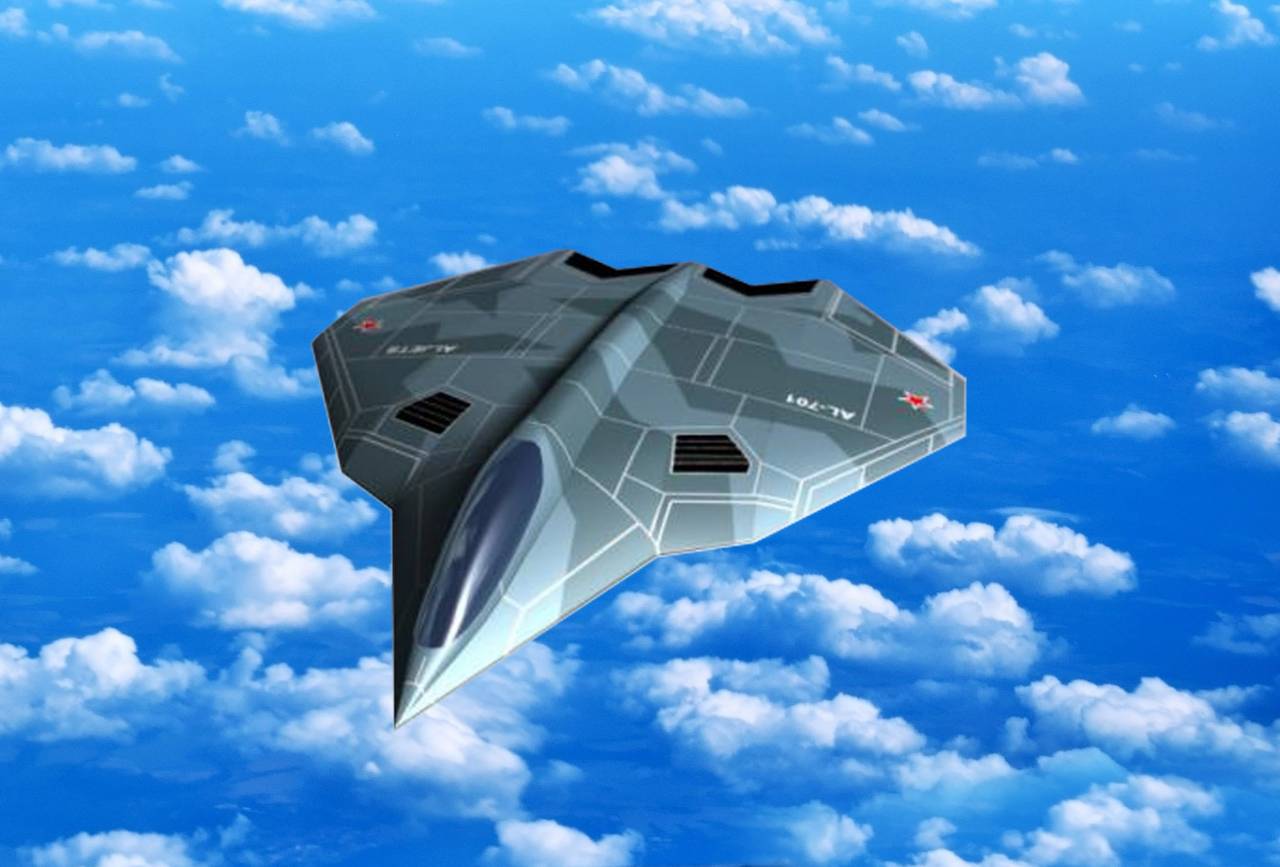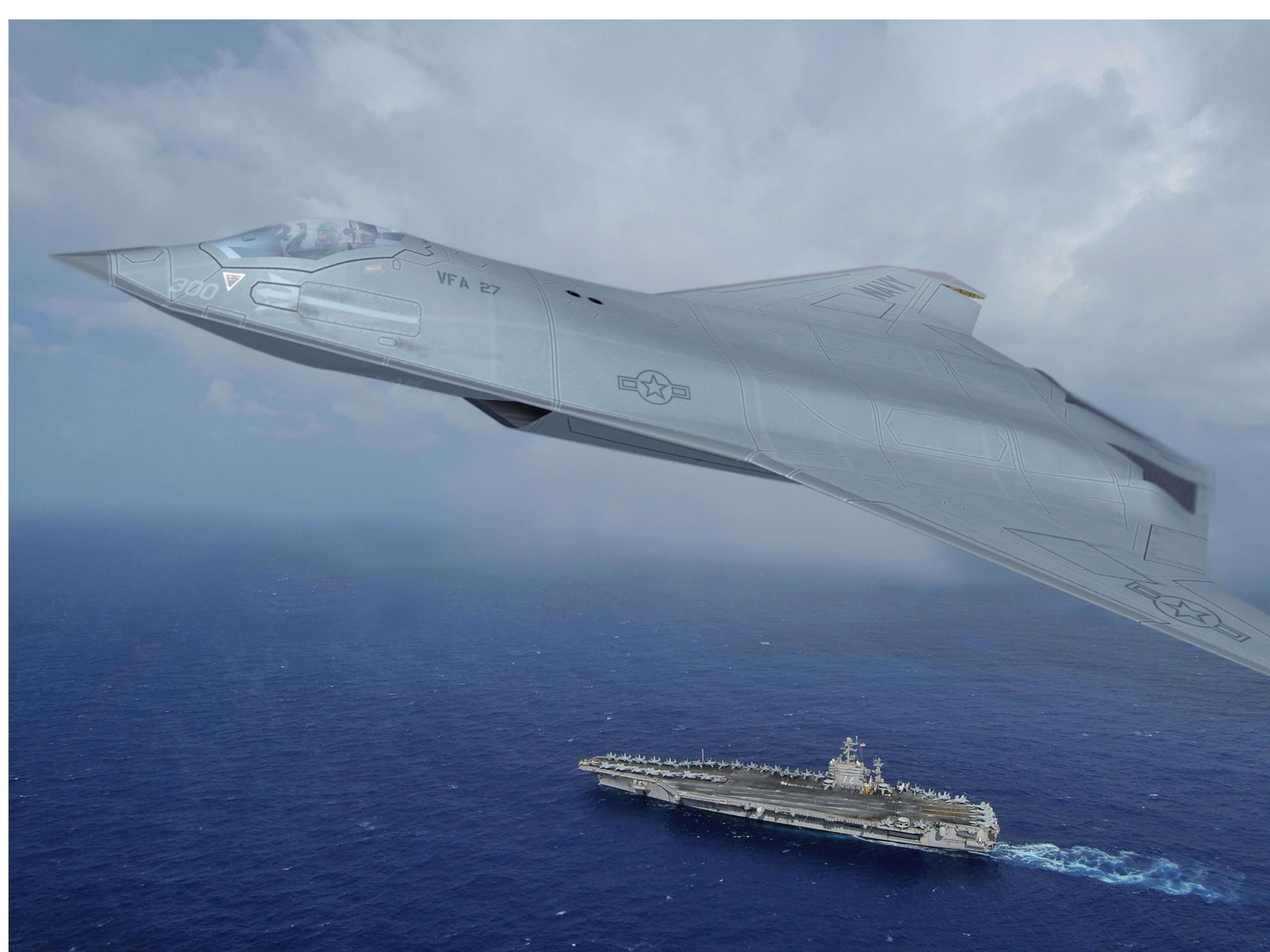Sixth Generation Fighter Jets - Kendall says the Air Force's sixth-generation fighter jets are "not too far off." Several unidentified companies are still vying to build the sixth-generation fighter, the centerpiece of the Air Force's next-generation air dominance system.
The Next Generation Air Dominance (NGAD) program envisages a sixth generation fighter jet along with various types of drones. (Northrop Grumman)
Sixth Generation Fighter Jets

LONDON: The Air Force has yet to announce a winner among the companies still vying to build the service's sixth-generation jet, but the final shortlist is "not far off", a top service official told Breaking Defense over the weekend.
Japan Plans To Deploy Unmanned 6th Gen Stealth Fighter Jets By 2035
While Air Force Secretary Frank Kendall declined to say when a manufacturer would be selected for the next-generation air dominance system's cornerstone fighter, he offered little indication of the high-profile program's trajectory.
"It's not imminent, but it's not far off," Kendall said in an exclusive interview with Royal International Air Tattoo. "I'll give you a little tip."
The Air Force has so far confirmed three parts of the NGAD program: a manned sixth-generation fighter, the AIM-260 Joint Advanced Tactical Missile, which is currently in development, and a suite of drones — what Kendall calls "joint combat aircraft" — that will augment the manned fighter in combat.
In June, Kendall announced that the NGAD fighter had advanced to the engineering, manufacturing and development stages, prompting speculation about whether the Air Force had selected a prime contractor for the program. But later that month, Kendall said NGAD still had competition, raising more questions about the program's status.
United States Has Flown A Brand New Fighter Jet
Although Kendall declined to answer most of Breaking Defense's questions about NGAD, he did say the program will not have a single prime at the "systems integrator" that oversees the assembly of the family of systems, each of which has separate acquisition efforts for the Air Force. of the elements.
"The overall integrator will probably be the government and maybe some industry support," he said. "The NGAD platform itself will have a traditional prime contractor."
The Air Force is reluctant to discuss which airlines are involved in NGAD. Boeing, Lockheed Martin and Northrop Grumman could build the sixth-generation fighter jet, but it's unclear whether all three are participating in the ongoing race.

At least one full-scale NGAD combat demonstrator made its first flight in 2020. Air Force officials declined to provide further details about the aircraft's manufacturer or its capabilities, although they did make clear that digital engineering is a critical technology. Service to develop it much faster than the audience expected.
Beyond The F 22 Or F 35: What Will The Sixth Generation Jet Fighter Look Like?
"What we did was an experimental prototype," Kendall said in June. "We basically had an X-plane program that was designed to de-risk some of the key technologies that would be required for a production program."
Kendall said the Air Force plans to field the NGAD "by the end of the decade." It has not yet been revealed how much the service will ultimately buy. While America's fifth-generation F-35 joint strike fighter jet is still rolling off the production line and being deployed around the world, work has already begun on a future sixth. - Generation Fighter - An aircraft that could have increased stealth, drone buddies, artificial intelligence, and the ability to heal itself when damaged.
Welcome back to Left of Boom. I'm your host, Editor-in-Chief Hope Hodge Sec. A top Air Force official admitted late last year that the service had secretly built and flown a prototype for a future fighter jet. Even as the United States continues to build its flagship fifth-generation fighter, the F-35, there is much speculation about what will come next. At least a dozen countries are now at some stage of developing sixth-generation fighter jets -- and experts continue to debate what "sixth generation" means. A few things seem clear: the airplane of the future will be smarter, drone-assisted, and have a pilot in the cockpit. To give us more insights into the future of war warfare. We're joined by Richard Aboulafia, Teal Group's vice president of analytics. He is one of the leading voices in aviation, and his columns appear regularly in Aviation Week and Forbes.com. Welcome to the show, Richard Abulafia.
So, let's start with a very basic question. I think a lot of people have heard about fourth generation, fifth generation, and now sixth generation fighter jets. Can you check out what are the defining features of the sixth generation fighter? And what are the key features of previous generations?
Tempest Sixth Generation Fighter To Get Blistering New Radar Technology
I'll let you know when we get there. That's right. I mean, you know, we loosely define generations of fighter jets that have been designed over the years. And, you know, I think there were a lot of breaks between generations, the first generation wasn't even supersonic at the end of the day, you know, so you look at what came over the years in terms of major enablers and technologies. There have been precision radars that can shoot beyond visual range, air-to-air missiles, better electronic warfare systems, upgrading radar to airborne and electronically scanned array antennas. Fifth generation, you know, you can broadly describe it as having some degree of stealth, maybe not all aspects of stealth, but the low observability, the integrated sensor fusion allows the pilots to have a much better idea of what's going on around them. the battlefield Fully integrated EW systems, of course, respond to a range of threats. And many other enablers, which are important. This is to some extent a way of defining the marketplace. As a result, it's kind of curious that the fifth generation aircraft ever built were the F 22 and the F-35. All the rest were fourth generation. But given many of the building blocks and subsystems associated with the fifth generation, the so-called Generation 4.5, it naturally blurs the lines even more.
If I were Michael Scott and asked, "Tell me like I'm five," you'd have to give a sentence like 4, 5, 6, how would you boil it down?
Trenches of technology have been introduced, and the fifth is above all low observability. Lots of data, lots of offboard and onboard sensors, with all the data feeding the pilot to give him or her a clear picture of the battlefield of the threat environment.

I get it. This is helpful. Thanks. I think 12 countries have now announced that they are working on developing sixth generation fighters, including our favorite competitive rivals and friends. Which countries do you think are at the forefront of development at this stage? What kind of progress are they making?
China 'on Track' For 6th Gen Fighter, Us Air Force Needs To Get There First: Acc Chief
Well, you know, there are big questions about what the sixth generation is. And, you know, first of all, you have to start with the fifth generation as your basic, your primary building block. This means that the US will have this huge advantage as it is the only country that has actually built a fifth generation aircraft. Now, what is 6th generation except everything that 5th generation people didn't build because they only built generation 4 or 4.5 generation. Beyond that, you know, probably the biggest enabler is hyper-connectivity, everything is connected. Systems, other nodes on the battlefield, other sensors on board, all connected at hyper-fast speeds, will be an important part. Another thing that seems highly desirable, basically, is a greater degree of human-machine collaboration. That means faithful wingman-type systems. and the ability to control additional systems around the pilot. That means the Skyborg, Loyal Wingman or any Air Force partnering with Australia, is one of the equipping systems. And it will be an important technology because it also influences artificial intelligence. You know, a pilot with a bunch of add-on systems can't do much. Unless these hydraulic systems are given a level of combat autonomy. So artificial intelligence is important there. An important aspect of the sixth generation may be a way to correct the limitations of the initial fifth generation plan. The F-35 was brilliant when it came to sensor fusion. In terms of stealth, quite impressive performance compared to the mission. But as a flying vehicle, the F-22 falls short in comparison. The joke was that the F-22 was a great flying vehicle looking for a good package of mission equipment. The F-35 is an excellent mission equipment package for those looking for a good air vehicle. You know, so if you can combine the traditional
Second degree assault washington state, 2nd degree assault sentence, 2nd degree aggravated assault, 2nd degree assault mn, 2nd degree assault, 2nd degree assault definition, 3rd degree assault washington state, 4th degree assault washington state, 2nd degree felony assault, 4th degree assault washington, what is assault 2nd degree, 2nd degree assault charges